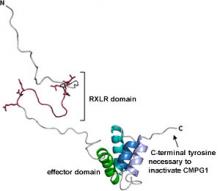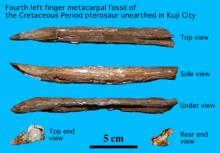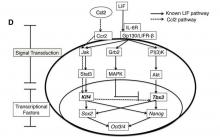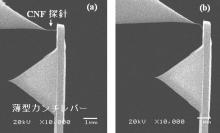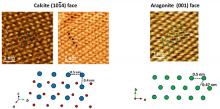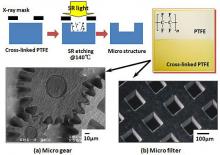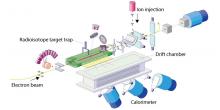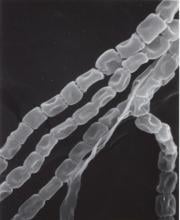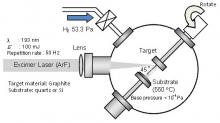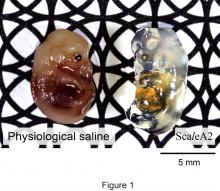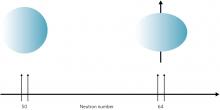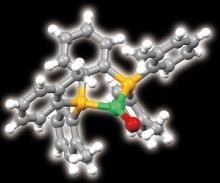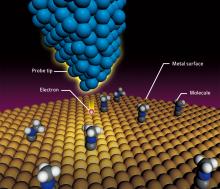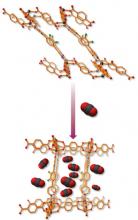Japan
News

08 Sep 2011
A study in transport genes leads to better understandings in drought tolerance

08 Sep 2011
Discovery of a Mutual Regulation Mechanism Controlling Drought and Salt Stress Responses

06 Sep 2011
A new use for fluorescent---Gas detection.
06 Sep 2011
Analysis on the plant destroyer yield insight in plant immunity
06 Sep 2011
The largest ever pterosaur fossil discovered in Japan found in Tohuku

05 Sep 2011
Assoc. Prof. Yoshihiro Kitamura of Waseda University assesses the future of Japanese yen in the international financial market
05 Sep 2011
Published in the August issue of Stem Cells, researchers at the RIKEN Omics Science Center found a way for future advances in regenerative medicine and more effective culturing techniques for human pluripotent stem cells.
05 Sep 2011
Toyohashi Tech researchers develop a low cost and efficient method for producing electrically conducting composites based on electrostatic adsorption of CNTs onto resin and ceramic particles for applications including enzymes and cosmetics.
02 Sep 2011
Research shows how to use infra-red laser to selectively separate cells

02 Sep 2011
The RIKEN Brain Science Institute (BSI) is seeking outstanding neuroscientists for tenure-track Team Leader positions (equivalent to U.S. Assistant or Associate Professor) and for a tenured Senior Team Leader position (equivalent to U.S. Full Professor)
02 Sep 2011
Collaborative study shows the mechanical properties of Carbon NanoFibers probes
02 Sep 2011
Researchers succeed to produce 3D atomic imaging of photoelectron holography.
02 Sep 2011
Research scientists at Tohoku University achieved atomic-level observation of the crystal growth process
02 Sep 2011
The first chemical complex consisting of rare earth metals and boron atoms produces unexpected results heralding new synthetic chemistry techniques
02 Sep 2011
Collaborative research discovered techniques to create fluorinated polymers on small scale
02 Sep 2011
Unique experimental approaches and persistence have paid off for researchers determined to resolve the structure of unstable nuclei at the RIKEN Nishina Center for Accelerator-Based Science
02 Sep 2011
Identification of enzymes critical to natural bacterial drug production points to shortcuts for building better therapeutic agents
02 Sep 2011
Research demonstrates new potential photovoltaic material
01 Sep 2011
Toyohashi Tech researchers (Japan) develop magnonic crystal-based ultra-high sensitive magnetic fields sensors for monitoring heart and brain activity and room temperature.
30 Aug 2011
Combined with fluorescence labeling, new approach produces 3D images at unprecedented depth and levels of spatial detail

26 Aug 2011
The ability to control how magnetic vortices gyrate together has potential application in magnetic devices

26 Aug 2011
Guidance signals prevent neurons from making bad connections by triggering a mechanism that causes growing axons to shrivel and retract
19 Aug 2011
Adding neutrons to synthetic atoms can drastically alter the shape of their nuclei and affect their stability
19 Aug 2011
Electronic screens based on new energy-efficient technology could become more affordable thanks to the substitution of expensive metal components with copper ones
19 Aug 2011
The observation and manipulation of single molecules by scanning tunneling microscopy is opening new frontiers in nanoscience
17 Aug 2011
From harnessing microorgansisms in bioactuators to algorithms for Internet-based information analysis, the Toyohashi Tech e-Newsletter describes a diverse range of research projects.

12 Aug 2011
Plants switch off growth signals by targeting ‘used’ receptor molecules for destruction
12 Aug 2011
Materials made from porous coordination polymers with flexing structures make better traps for harmful gases
05 Aug 2011
Experiments using fruit flies as a model system reveal a molecular mechanism underlying sperm morphogenesis in insects

05 Aug 2011
High-speed laser measurements reveal new insights into rearrangements of light-driven chemical structures with implications for solar-energy conversion and opto-electric devices
Researchers
Sorry, no researchers coming up for this topic.
Giants in history
Ruby Sakae Hirose (1904 – 1960) was a Japanese-American scientist whose research contributed significantly to our understanding of blood clotting, allergies and cancer.
Haisako Koyama (1916 – 1997) was a Japanese solar observer whose dedication to recording sunspots – cooler parts of the sun’s surface that appear dark – produced a sunspot record of historic importance.
Michiaki Takahashi (17 February 1928 – 16 December 2013) was a Japanese virologist who developed the first chickenpox vaccine.
Toshiko Yuasa (11 December 1909 – 1 February 1980) was the first Japanese female physicist whose research on radioactivity shed light on beta decay – the process in which an atom emits a beta particle (electron) and turns into a different element.
Baron Kitasato Shibasaburo (29 January 1856 – 13 June 1931) was a Japanese physician and bacteriologist whose work led to a new understanding of preventing and treating tetanus, diphtheria and anthrax.
By isolating soil microorganisms and studying the compounds they produce, Satoshi Omura (born 1935) discovered almost 500 organic compounds with unique properties that were produced by these microorganisms, including many new antibiotics.
In 1915, pathologist Katsusaburo Yamagiwa and his research assistant Koichi Ichikawa became the first to prove that chronic exposure to chemicals can cause cancer.
In 1915, Koichi Ichikawa along with pathologist Katsusaburo Yamagiwa became the first to prove that chronic exposure to chemicals can cause cancer.
Reiji Okazaki (8 October 1930 – 1 August 1975) and Tsuneko (7 June 1933) were a Japanese couple who discovered Okazaki fragments – short sequences of DNA that are synthesized during DNA replication and linked together to form a continuous strand.
Tsuneko (7 June 1933) and Reiji Okazaki (8 October 1930 – 1 August 1975) were a Japanese couple who discovered Okazaki fragments – short sequences of DNA that are synthesized during DNA replication and linked together to form a continuous strand.
Husband and wife team, Kimishige (3 December 1925 – 6 July 2018) and Teruko Ishizaka (28 September 1926 – 4 June 2019) discovered the antibody class Immunoglobulin E (IgE) that triggers allergic reactions. They also discovered that IgE antibodies attach to white blood cells, known as mast cells, releasing histamine, which causes allergic reactions.
Husband and wife team, Kimishige (3 December 1925 – 6 July 2018) and Teruko Ishizaka (28 September 1926 – 4 June 2019) discovered the antibody class Immunoglobulin E (IgE) that triggers allergic reactions. They also discovered that IgE antibodies attach to white blood cells, known as mast cells, releasing histamine, which causes allergic reactions.
Japanese chemist Takamine Jokichi (3 November 1854 – 22 July 1922) founded the Tokyo Artificial Fertilizer Company, where he isolated a starch-digesting enzyme (named takadiastase) from the fungus Aspergillus oryzae.
Hideki Yukawa (23 January 1907 – 8 September 1981) was awarded the Nobel Prize in Physics in 1949 for predicting the existence of the pi meson subatomic particle. Japan’s first Nobel laureate, Yakawa also expressed his support for nuclear disarmament by signing the Russell–Einstein Manifesto in 1955.
Shinichiro Tomonaga (31 March 1906 – 8 July 1979), together with Richard Feynman and Julian Schwinger, was awarded the Nobel Prize in Physics in 1965, for their contributions to advance the field of quantum electrodynamics. Tomonaga was also a strong proponent of peace, who actively campaigned against the proliferation of nuclear weapons and promoted the peaceful use of nuclear energy.
Japanese chemist Kenichi Fukui (4 October 1918 – 9 January 1998) was the first Asian scientist to be awarded the Nobel Prize in Chemistry. Together with Roald Hoffman, he received this honour in 1981 for his independent research into the mechanisms of chemical reactions.
Minoru Shirota (April 23, 1899 – March 10, 1982) was a Japanese microbiologist who invented the popular fermented drink Yakult.
Japanese physicist Ukichiro Nakaya (1900-1962) made the world’s first artificial snowflakes. He started his research on snow crystals in the early 1930s at Hokkaido University, where there is an unlimited supply of natural snow in winter. By taking over 3,000 photographs, he established a classification of natural snow crystals and described their relationship with weather conditions.
The techniques that make industrial pearl culturing possible were developed over a century ago at the Misaki Marine Biological Station in Japan. The station’s first director, Professor Kakichi Mitsukuri, emphasized to Kokichi Mikimoto in 1890 that stimulating pearl sac formation was important for pearl growth, and they went on to successfully develop methods for culturing pearls.
The field of solid-state ionics originated in Europe, but Takehiko Takahashi of Nagoya University in Japan was the first to coin the term ‘solid ionics’ in 1967. ‘Solid-state ionics’ first appeared in 1971 in another of his papers, and was likely a play on ‘solid-state electronics’, another rapidly growing field at the time.
Chika Kuroda (24 March 1884 – 8 November 1968) was a Japanese chemist whose research focussed on the structures of natural pigments.
Motoo Kimura (13 November 1924 – 13 November 1994) was a Japanese theoretical population geneticist who is best remembered for developing the neutral theory of molecular evolution.
Osamu Shimomura (27 August 1928 – 19 October 2018) was a Japanese organic chemist and marine biologist who dedicated his career to understanding how organisms emitted light.
Kikunae Ikeda (8 October 1864 – 3 May 1936) was a Japanese chemist who discovered the fifth basic taste, umami.
Umetaro Suzuki (7 April 1874 – 20 September 1943) was a Japanese scientist best remembered for his research on beriberi, a disease caused by vitamin B1 deficiency, characterized by limb stiffness, paralysis and pain.
Kono Yasui (16 February 1880 – 24 March 1971) was a Japanese botanist who researched the genetics of poppies, corn and spiderworts and surveyed the plants that had been affected by the nuclear fallout after the atomic bombings of Hiroshima and Nagasaki.
Hitoshi Kihara (1893 – 1986) was one of the most famous Japanese geneticists of the 20th century. One of his most significant contributions was identifying sex chromosomes (X and Y) in flowering plants.
Michiyo Tsujimura (17 September 1888 – 1 June 1969) was a Japanese agricultural scientist and biochemist recognized for her research of green tea components.
A Japanese surgeon, Tetsuzo Akutsu (20 August 1922 – 9 August 2007) built the first artificial heart capable of keeping an animal alive.
Ogino Ginko (3 March 1851 – 23 June 1913) was the first registered female doctor to practise modern medicine in Japan.
Japanese geochemist Katsuko Saruhashi developed the first method and tools for measuring carbon dioxide in seawater


